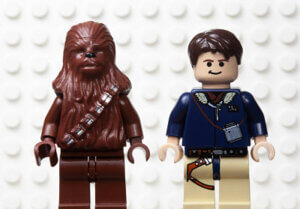|
|
 As we continue to explore the concept of storytelling within marketing, we’re going to turn our attention to you today. Previously, we discovered that you/your brand is not the hero of the story. This is something many brands get wrong. You have to make your customer the hero of the story. They need to see themselves in the current reality, fighting whatever the adversary may be. But a critical part of any story is who goes on the journey with the hero.
As we continue to explore the concept of storytelling within marketing, we’re going to turn our attention to you today. Previously, we discovered that you/your brand is not the hero of the story. This is something many brands get wrong. You have to make your customer the hero of the story. They need to see themselves in the current reality, fighting whatever the adversary may be. But a critical part of any story is who goes on the journey with the hero.
In Harry Potter, that would have been Hermione; in Star Wars, it was Yoda and Obi-Wan. In your story – it’s you.
If we were truly constructing a story, we’d begin to define and describe the sidekick so we could portray them authentically within the story. If you google sidekick archetypes, you’ll see models that offer up seven to 11 or so distinct types of sidekicks.
Let’s take a look at some of the most useful archetypes.
The innocent: They’re trusting, optimistic, and wholesome. This character reminds us to slow down and enjoy the journey. A great example would be Coke or Dove.
The hero: This brand saves the day. They’re fearless and fight alongside the story’s hero to beat the foe. FedEx’s old brand – when it absolutely, positively has to be there overnight was a smart hero brand.
The everyman: This sidekick is comfortable because they’re approachable and don’t take themselves too seriously. They’re fair and have high values and integrity. Budweiser and Levis are good examples of this archetype.
The lover: This archetype is all about the relationship so loyalty, connection, and commitment are crucial. They have an enthusiastic appetite for life. Brands that are indulgences like Godiva or are all about expressing emotions like Hallmark are lover archetypes.
The caregiver: The name says it all. This archetype is all about giving care with incredible compassion, generosity, and with fierce protectiveness. Good examples include Johnson & Johnson and Volvo.
The rebel: Rebels are unconventional, outrageous and a little radical. They fight the establishment and often march to the beat of their own drum. But they are forgiven for this brash behavior because they are unfailingly honest and courageous. Harley Davidson and Des Moines based Raygun are excellent examples.
The magician: Magicians are the dreamers who inspire transformation and a sense of wonder. They have incredible charisma and curiosity and can help others see the dream. As you might imagine, Disney is an ideal example.
The sage: They are the source of wisdom, direction, and answers. They seek truth and knowledge but balance that left side of their brain with a deep understanding of how humans function and change. Mayo Clinic and PBS are sage archetypes.
The explorer: These characters are all about adventures, being independent and self-sufficient, and will satisfy their curiosity through new experiences and perspectives. Jeep is the ultimate explorer archetype.
Just like people are not a single personality trait, your brand won’t be either. But you will have a dominant type and a couple of supporting archetypes. Think of your dominant archetype as the headline and central point of any communications piece. The supporting types can show up in the body copy as proof points.
What makes this so compelling is the emotional connection that you can create between these archetypes and your audience. We know all buying is emotionally based so that connection, or lack thereof, will move the prospect closer to actually buying or show them that you’re not a good fit, and they’ll move on faster. Either outcome is good for you.
Next time we’ll delve into the journey that the hero (your customer) and the sidekick (you) go on together.
This was originally published in the Des Moines Business Record, as one of Drew’s weekly columns.
